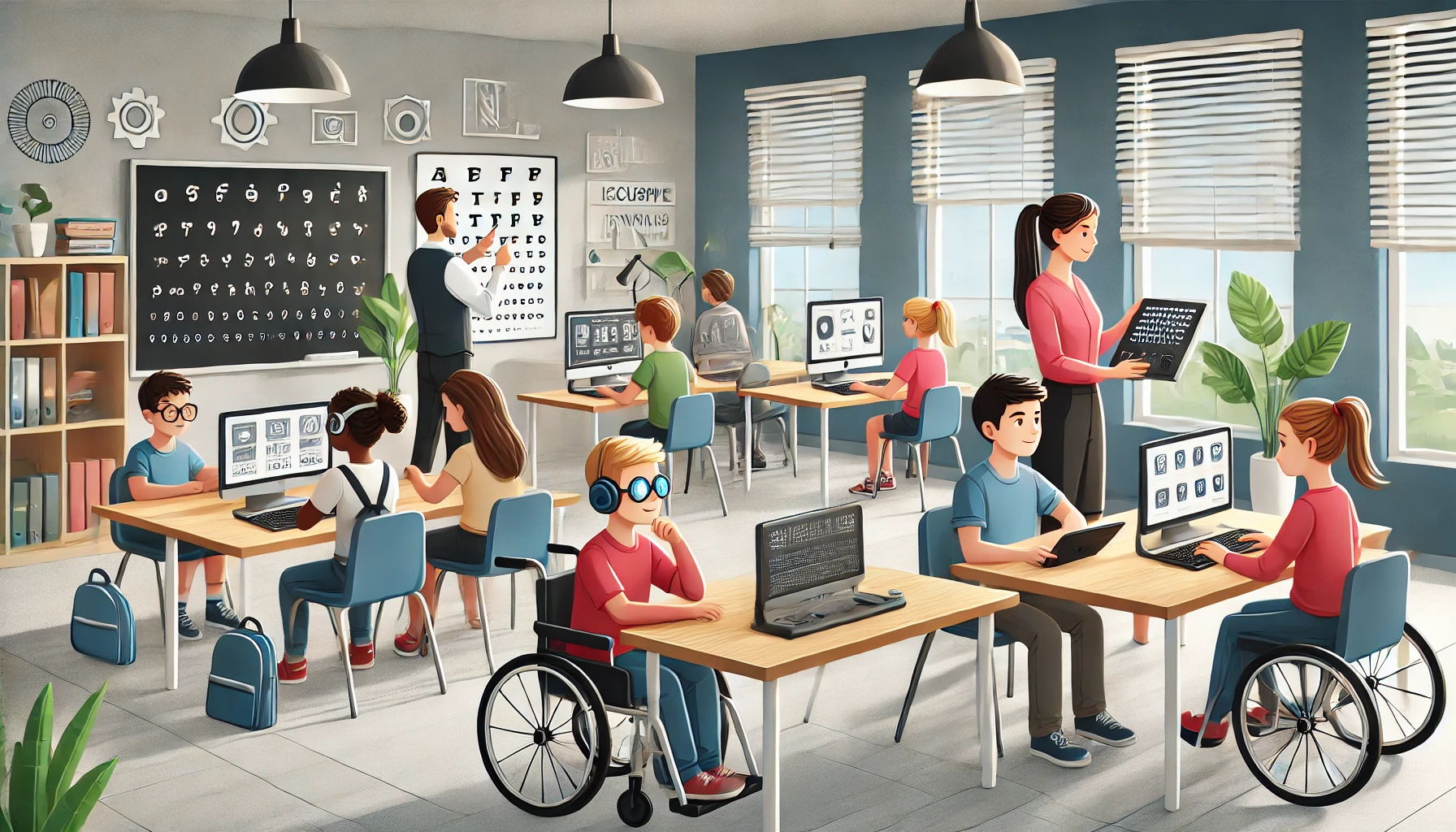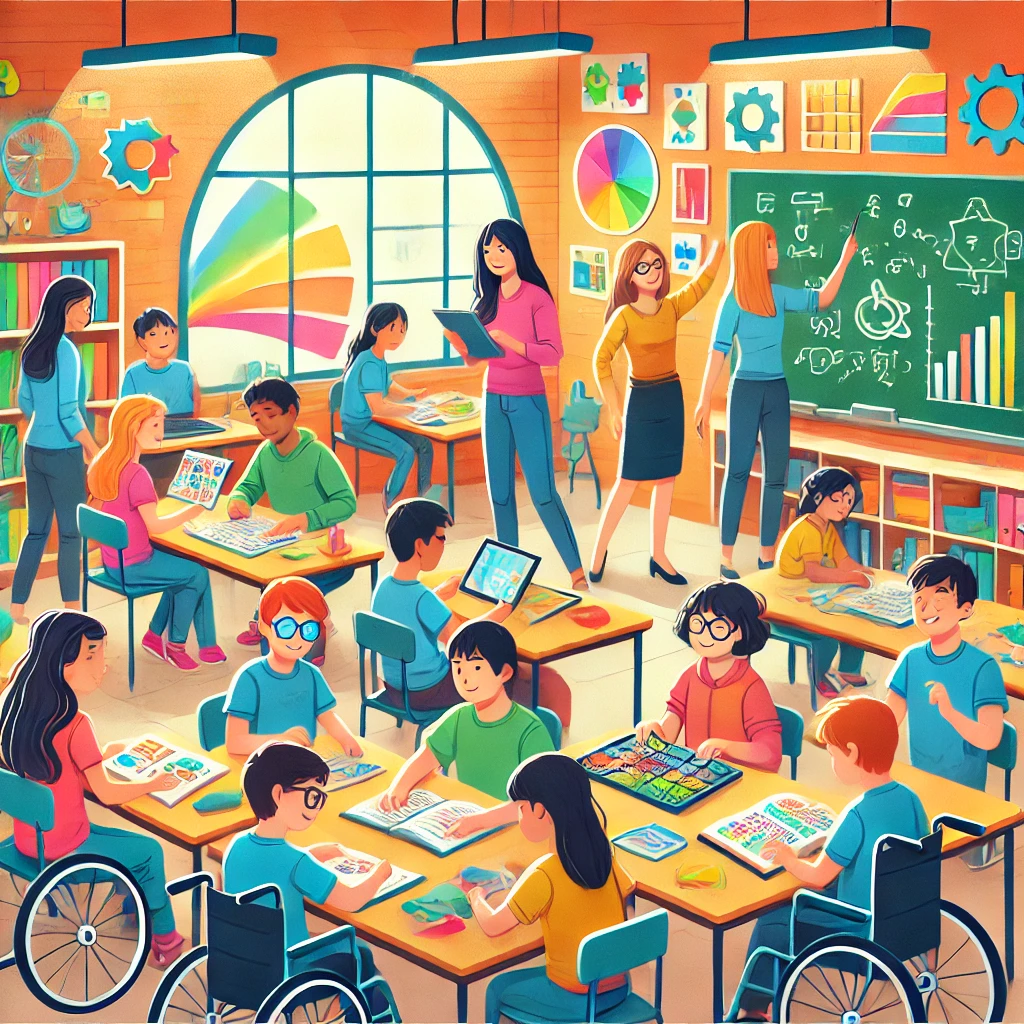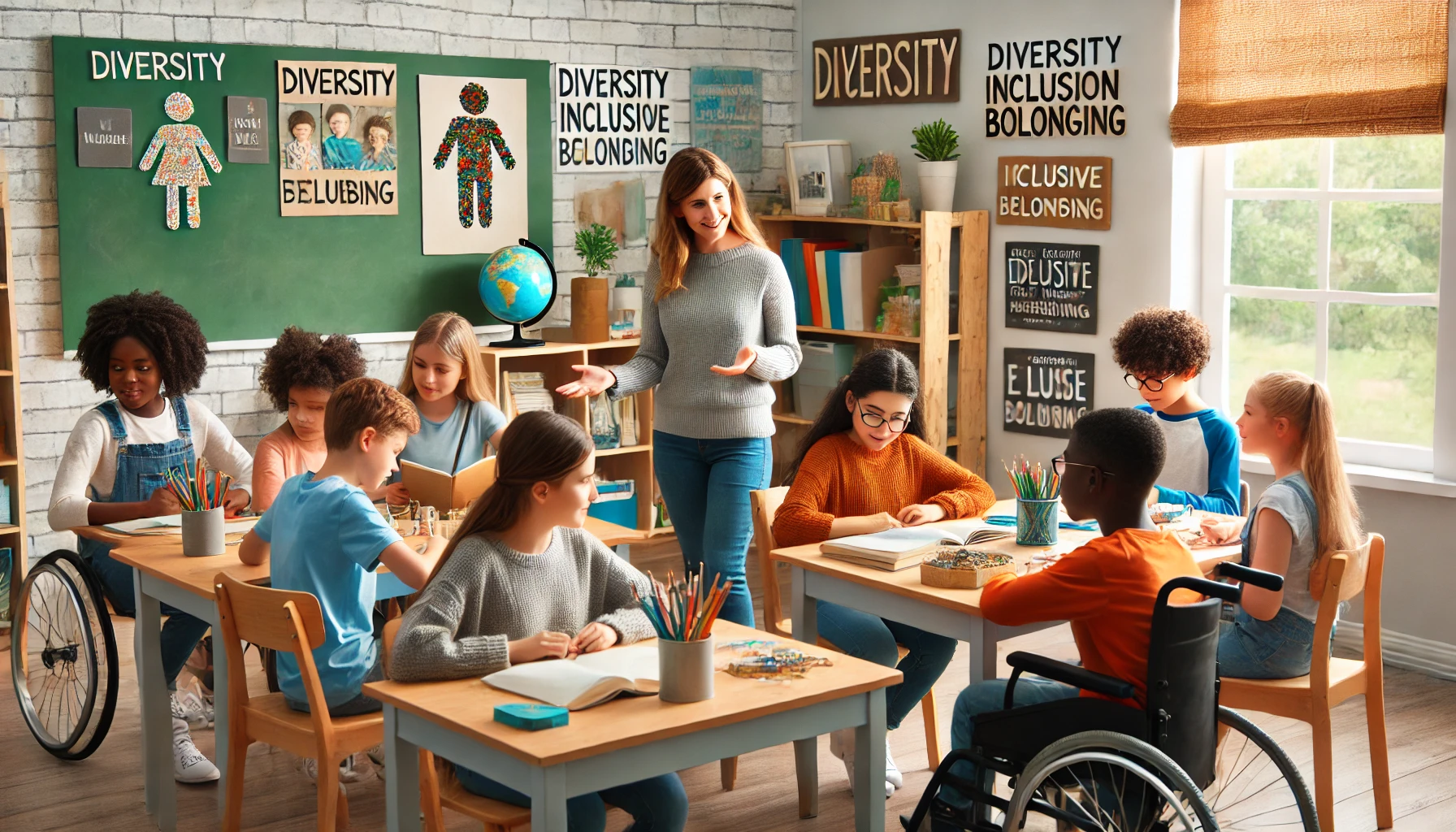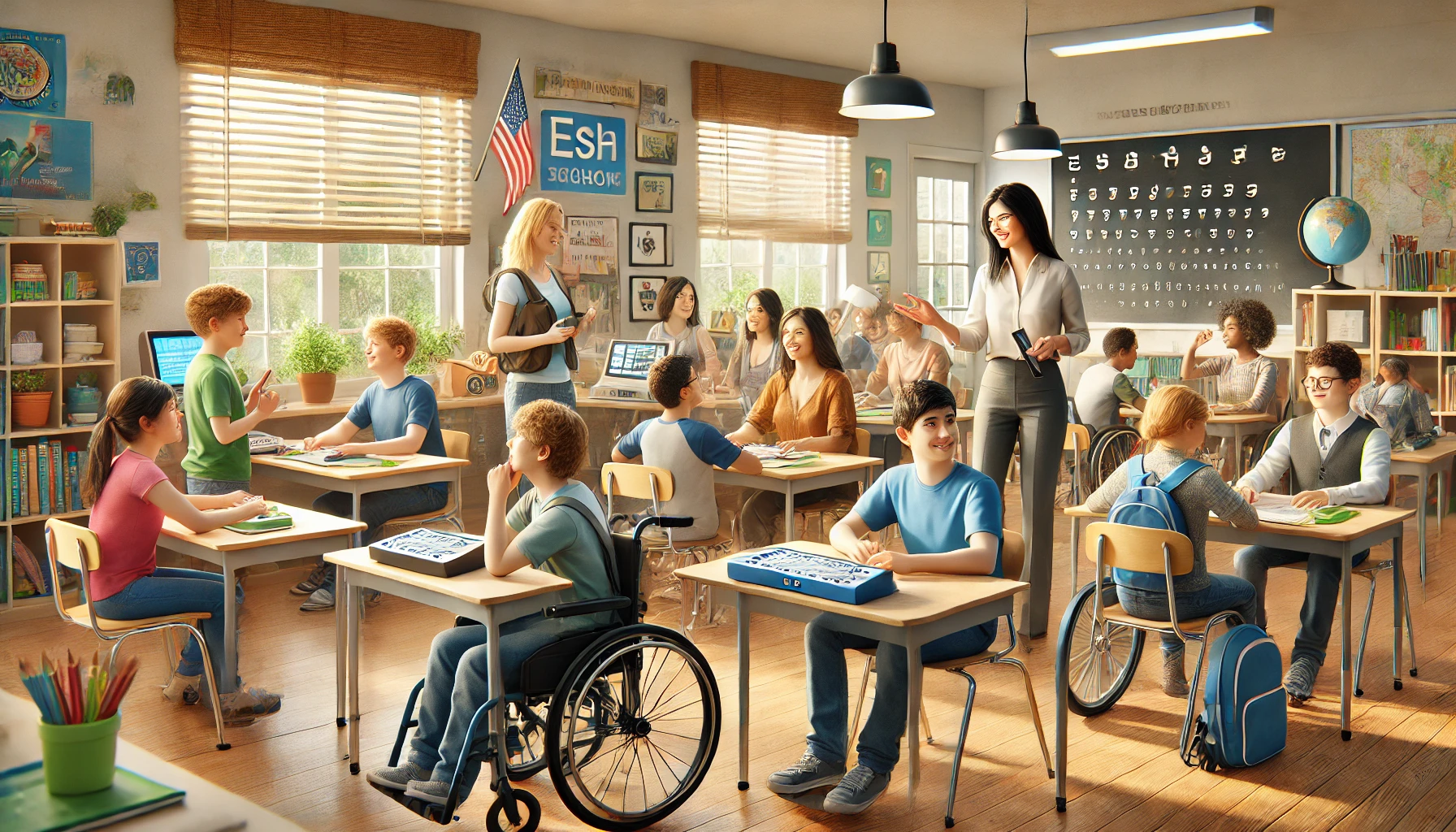Understanding Inclusive Education
In schools everywhere, creating an inclusive classroom is all about giving every student a fair shake. It doesn’t matter if someone has unique abilities or needs—everyone gets the same chance to learn and grow in these inclusive classroom environments. The big idea of inclusive education is to craft a space that’s supportive and varied, where all types of students can hang out and feel accepted.
Definition of Inclusive Education
Inclusive education banks on the idea that each child deserves a shot at education, armed with the necessary support and resources to blossom in a mixed learning scene. It steers clear of dividing students by differences and instead sees diversity as an advantage, enhancing the learning adventure for everybody involved. By making sure every student is recognized and involved in the learning game, inclusive education works to build a sense of community and fairness for all.
The Individuals with Disabilities Education (IDEA) Act backs the rights of students with disabilities, ensuring they get a public education that fits and is as open as possible. This law stresses offering educational paths similar to what’s available to everyone else, while still addressing the special needs of those with disabilities.
Importance of Inclusive Education
Inclusive education shines brightest because it invites a mix of backgrounds into the classroom, pushing for fairness and acceptance. Teachers who welcome inclusive strategies can build spaces where every student feels appreciated, heard, and helped throughout their school journey. It nurtures a community vibe among students, promoting working together, empathy, and respect.
Also, inclusive education tears down walls and upends stereotypes, spreading a mindset of inclusion and appreciation for individual quirks. Not only does it boost opportunities for students with disabilities, but it also makes learning richer for all attendees, planting seeds of sympathy, tolerance, and a love for diversity.
Knowing the heart of inclusive education helps us see why it’s crucial for sparking creativity and diversity in schools. When parents, teachers, and supporters get involved, they help to create spaces that empower each learner to unleash their fullest potential.
Benefits of Diversity in Education
Bringing all kinds of people together in schools offers perks that reach past textbooks and help shape how folks see and interact with the world. Fostering imagination and sharpening problem-solving skills are two major upsides
 .
.
Boosting Creativity and Innovation
Having a mix of backgrounds and experiences in the classroom can really spark creativity and fresh ideas. A splash of various views can change how students think, making them better at deciding and figuring things out. According to American University, mixing it up sparks creativity. A study highlighted by Scientific American shows that diverse groups are better at problem-solving than ones where everyone thinks the same. Being surrounded by different minds not only lights up creative thinking but also strengthens the ability to tackle problems from different angles, leading to great solutions.
Strengthening Problem-Solving Skills
A range of viewpoints in school can seriously level up problem-solving skills. When students encounter ideas unlike their own, they learn to think critically and with an open mind. This kind of exposure makes them consider different approaches, leading to a lively and all-around problem-solving setting.
Plus, curricula that bring in various perspectives arm students to dive into big themes like identity and justice. Tackling these big topics doesn’t just boost their academic skills but sets them up for diverse workplaces down the line, as pointed out by the University of Illinois College of Education.
So, diversity in education isn’t just about hitting the books—it’s about crafting thinkers who can tackle the world’s twists and turns with smarts and imagination. Nurturing diversity prepares students for the varied and ever-connecting world out there.
Fostering an Inclusive Classroom
Creating an inclusive classroom means making a place where our colorful lives and differences are not just accepted but celebrated, and where every student’s potential can grow. This chat covers two big things: encourage students to get involved in the community and valuing the wide range of perspectives.
Encouraging Civic Engagement
When students meet folks from different backgrounds, it kickstarts civic engagement, like a snowball on a hill. A report from the Century Foundation says that when college students mix with others unlike themselves, they often jump into community action. Such interactions help mold students into active citizens who can understand and shape their communities. Here they engage with a wider world, and it gets them thinking about what kind of stuff they can change.
Bringing community engagement into the classroom invites students to tackle real-world issues, chew them over in debates that spark a bit of brain burn, and work on projects that have a local flavor. Teachers who encourage this culture of awareness can turn students into movers and shakers, ready to stir up some positive vibes in their neighborhoods.
Advantages of Diverse Perspectives
Diversity in education does something a bit magical. It’s not just sticking people from different walks of life together. It’s about sparking a respect-fueled bonfire that opens up everyone’s world. When schools welcome diversity, they help us unlearn stereotypes and drip away at prejudice, leading us toward a world where we’ve got more room for everyone.
One major perk of having varied perspectives is the supercharged learning experience it brings. By interacting with classmates who think in unique ways, students learn to tackle problems from different angles. This diversity boosts critical thinking, creativity, and prepares students to deal with a world that’s all mixed up and tangled in complexity, but so full of possibility.
Recognizing and making the most of these varied perspectives sets the stage for a classroom that doesn’t just function but flourishes. Through inclusive practices, students pick up skills in working harmoniously with others, communicating clearly, and understanding deeply. It builds their confidence and gives them a home, right there in the classroom.
To sum it all up, making classrooms inclusive and welcoming of different perspectives sets the tone for an environment where fairness, respect, and a solid understanding are as commonplace as chalk dust. Teachers hold the gears of shaping a generation that’s kind, aware, and ready to bring something positive to our diverse and tightly-knit world.
Equity and Diversity in Education
Looking out for fairness in classrooms isn’t just about doing what’s right; it’s about making sure every kid, even those who might need a little extra help, gets what they need to succeed. Schools that focus on fairness can make sure all students get the resources tied to their individual needs. This ain’t just about tickin’ boxes; it’s about giving all kids their best shot at success (Teacher Academy).
Creating Equitable Learning Environments
Think of classrooms where fairness is the rule of the day. It means making sure every student, no matter who they are or where they come from, gets a fair shake at learning. Such classrooms take a good hard look at what each student needs and give them the tools to succeed. When schools nail this, it means every student gets the help they need, based on what makes them tick, helping them feel like they belong. Schools promote openness, and it gives kids with unique situations the best possible chance to shine.
In these diverse classrooms, fairness is king. It pushes teachers to focus on what each student needs and deliver top-notch education. When schools get it right, every student feels like they matter and everyone in the community benefits.
Promoting Respect and Understanding
Building respect and understanding is about creating a vibe where diversity isn’t just noticed; it’s celebrated. Schools that put effort into this help students form relationships grounded in respect and kindness. This approach not only makes the day-to-day nicer but also strengthens the feeling of being part of a learning community where all voices matter.
Schools that emphasize empathy and acceptance create spaces where students can be themselves without fear. Such an atmosphere lights up students’ abilities to learn from one another, think openly, and reach their personal best (Teacher Academy).
Fairness and acceptance in schools aren’t just good talking points; they’re the building blocks of communities that seek justice and change. Prioritizing fairness along with fostering an environment that values every person sets the stage for genuine opportunities, helping all students find their place in a world that lets them grow into who they choose to be.
Strategies for Inclusive Education
Education isn’t one-size-fits-all. We all know that. It’s about time we embrace the quirks, the unique needs, and celebrate diversity within our classrooms. Two heavyweight strategies in this fight are Universal Design for Learning (UDL) and a strong focus on supporting Language Learners (LLs).

Universal Design for Learning (UDL)
Imagine learning that’s as flexible as yoga class. That’s UDL for you. This approach thinks like a tailor, designing teaching methods that can be mixed and matched according to what each student needs. It’s like having every tool in your educational toolbox ready to build up each student’s strengths and patch up any weaknesses. UDL taps into Howard Gardner’s brainy ideas about Multiple Intelligences. So every kid—whether they’re artsy, math-savvy, or music-oriented—gets a shot at success.
| UDL Principles |
|---|
| Different Paths to Knowledge |
| Engage All the Senses |
| Let Students Show What They Know in Their Way |
UDL’s about keeping learning open and accessible. Rather than shoving information down one particular path, students have more than one way to grab hold of knowledge. All kids, those with extra needs or without, and everyone in between, get a shot at feeling included and respected.
Supporting Language Learners (LLs)
Language Learners—we salute you. They’re the superheroes of the classroom, juggling grammar and vocabulary unique from home. To help them, teachers step up their game. It’s not just about developing language skills but ensuring these young minds thrive academically and socially.
Here’s the secret sauce: culturally responsive teaching. Recognize and incorporate the varied languages and traditions students bring into the room. This not only helps LLs feel like a million bucks but promotes harmony in class when diverse cultures are part of the day’s lesson plan.
Providing LLs with unique-to-them strategies could mean the difference between just getting by and truly thriving. When teachers embrace linguistic diversity, they’re not just opening doors—they’re tearing down walls. They’re creating a school environment where everyone gets to shine bright and contribute.
For anyone craving more on how to make our schools more like this, check out our treasure trove of inclusive education resources. It’s chock-full of useful tools and strategies to champion inclusivity in learning spaces.
Role of Teachers in Inclusive Classrooms
When it comes to inclusive education, teachers are the backbone, building a space where every student, especially those with special needs, can grow and shine. Teaming up with support staff and mixing up teaching styles is what makes inclusive classrooms tick.
Teamwork with Support Staff
A big part of making sure every kid gets included is teachers working hand-in-hand with support staff. These folks—educational assistants, therapists, counselors, and others—are all part of the team puzzle. Together, they think up ways to help students with their unique challenges and come up with personalized learning strategies. Teachers and support staff toss around ideas, bringing out the best in every student both academically and socially.
Regular check-ins with support staff are a must to see how students are doing, tackle any bumps along the road, and tweak teaching plans as needed. This ongoing teamwork builds a tight support system, making sure no student is left hanging.
Mixing Up Teaching Tools
Inclusive classrooms thrive on a mix of teaching tools that cater to different ways kids like to learn. It’s not a one-size-fits-all deal; teachers have to bring out textbooks, visuals, audio, and hands-on stuff to keep everyone in the game. This mix-up not only makes learning fun but also ensures everyone “gets it” their way.
Highlighting student progress with inclusive stories and varied materials makes everyone feel part of the gang. Teachers who pick resources that reflect all sorts of cultures and backgrounds give every student a piece of the spotlight, so they feel seen and heard.
Teachers need to keep things versatile, switching up methods and styles to match how each student learns best. By doing so, they craft a classroom vibe that’s all about fairness, variety, and personal growth.
By clutching onto teamwork with support staff and keeping teaching tools as diverse as the students themselves, teachers are the champions of inclusion. They create a nurturing space where every student gets to shine. This combo not only boosts academic success but also builds a sense of empathy and camaraderie among students, pushing a classroom culture that’s diverse and welcoming.






